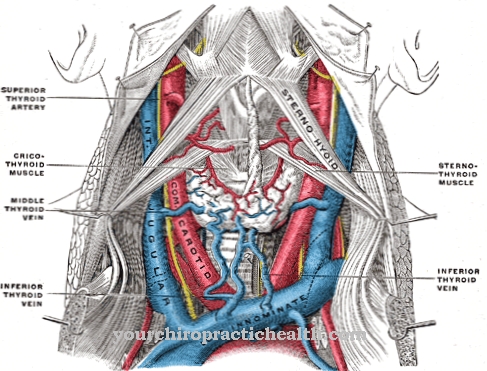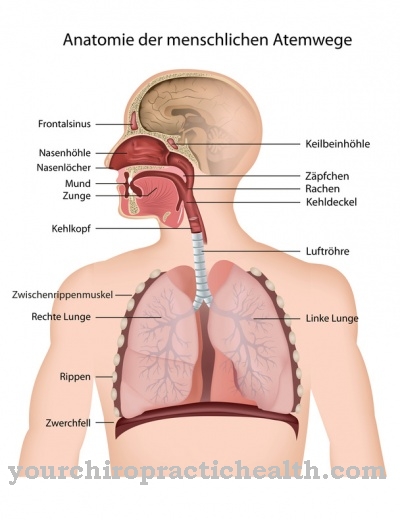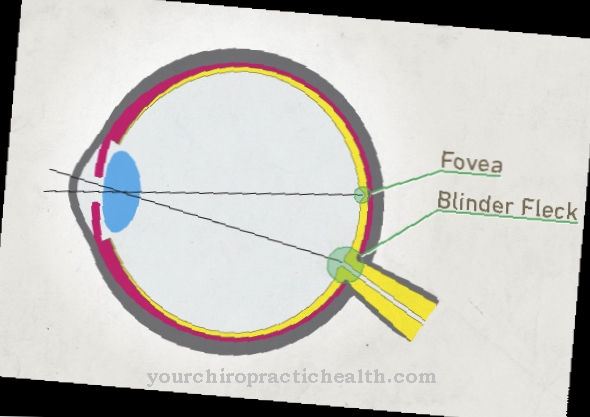The heart is the "engine" that blood is the "fuel". Around five to six liters of blood flows through the human body and makes up around eight percent of body weight. The blood supplies the entire body with vital substances via blood vessels, without which the functionality of the organism can no longer be guaranteed.
What is blood

The blood in our veins can literally stagnate, freeze or be hot and cause a corresponding temperament. So the blood circulation climates the body. It is also true that blood reacts like no other organ to changes in the organism and fends off diseases.
On its way, the blood circulation leads from the hair roots to the tips of the toes through the entire body, the blood transports nutrients, oxygen and toxins.
Is defined blood as a body fluid that ensures the functions of the body with the support of the cardiovascular system. Blood consists of the protein- and water-containing plasma, which functions as a cell carrier. These are the red blood cells, the erythrocytes, which also give the blood its dark red color, the white blood cells, the leukocytes, and the blood platelets, the thrombocytes.
The heart pumps blood through all blood vessels that are almost 100,000 kilometers (!) Long in each body. In this enormous task, the heart can be supported and relieved by the work of trained muscles and the venous valves.
The blood is in the narrower sense a body fluid, whereby it is referred to as a "liquid organ" or also as a "liquid tissue" because of its diverse functions. As a central element of metabolism, the body cannot do without the smooth cycle of the blood.
For every kilogram of body weight, there is an estimated 70 milliliters of blood, which in an adult human is about five to six liters of blood that is transported through the vascular system. Since the amount of blood in the body correlates with the respective body weight, the rule of thumb is that women have an average of one liter less blood than men. This fact is due to the higher body weight of men compared to women.
Anatomy & structure
blood is not a homogeneous mass, but consists of a large number of different components. With around 50 percent, the plasma represents the largest part of the blood. With 42 percent, the red blood cells, which are also known as erythrocytes, follow in second place.
Another four percent of the blood consists of proteins, while the platelets (so-called thrombocytes) only make up two percent of the blood. One percent is also all the fat, sugar and salt found in the blood. The white blood cells, also called leukocytes in medical jargon, account for significantly less than one percent, to be more precise only 0.07 percent.
Thus, only half of the blood consists of solid components, while the other half is liquid blood plasma: a 90 percent aqueous solution, the main task of which is the smooth "movement" of the blood within the vascular system.
The vessels that lead away from the heart are called arteries. They have a strong, muscular structure in order to be able to withstand the high pressure from the heart. The arteries continue to branch and become arioles and capillaries.
The vessel walls are thin and permeable, so that nutrients and oxygen that you have brought with you can be transferred to the individual cells and waste can be drained away. Once the waste products have been released to the degrading organs, the blood vessels expand again. On the way back to the heart, they are called veins. Simply put, this is the bloodstream.
Before the blood gets back on this path, it is pumped from the heart through the small pulmonary circulation to the lungs, where it can refuel with oxygen. Enriched with oxygen, the cycle begins again.
Functions & tasks
The blood So flows through the lungs and the liver, the mouth, the muscles and the brain as well as all other body cells and organs. Every single component of the blood fulfills its special tasks on the long way through the organism:
Probably the most important task of the blood is to distribute oxygen, which is inhaled through the lungs, as well as sugar, which is absorbed into the organism in the gastrointestinal tract, via the extensive vascular system throughout the body, i.e. every single one Supply cell.
On the other hand, it is up to the blood to transport away the metabolic products that the cells no longer need, such as carbon dioxide and urea. The individual cells in the body are not only dependent on the permanent supply of certain substances. For example, commands ordered by the brain must be passed on to the cells in the form of messenger substances. This forwarding also takes place via the blood, which gives it the task of a command network.
On its way through the lungs, the red blood cells have the task of absorbing the atmospheric oxygen inhaled into the lungs. In this way, all cells in the body are continuously supplied with oxygen. The oxygen is the generator of the cells, which thereby gain their "life energy". Carbon dioxide is a by-product of continuous oxygen degradation. This, too, transports the blood further, and it is exhaled back in the lungs.
Replenishment of valuable erythrocytes is produced in the red bone marrow. They function (work) for a period of around four months. They are finally broken down again in the spleen.
On its way through the intestine, the blood picks up the nutrients that have been broken down and crushed by the digestive processes. The plasma again transports these nutritional components to the individual cells, which use them further. Poisonous breakdown products are produced here, which travel to the kidneys and liver to be rendered harmless.
Exertion and excitement increase blood flow through the veins. The skin then gives off more heat. Conversely, we turn pale in winter, for example, because less blood is sent to the surface of the skin so that no heat is unnecessarily lost. This climate-regulating blood function is supplemented by the task of the white blood cells as the body's own immune defense.
The leukocytes protect the organism from infections. Although they are present in smaller numbers, they are twice the size of the erythrocytes in the blood. White blood cells can move around on their own. This gives them the option of either rendering pathogens harmless with antibodies or simply "eating them up". They are also produced in the bone marrow. This is also where the colorless, thin blood platelets come from. Their job is to quickly plug wounds. They thus regulate blood clotting.
As already mentioned, about five to six liters of blood flow in the body of an adult. In the event of an infection with a disease that spreads via the bloodstream, it would have fatal consequences in view of the extensive blood vessel system in humans with regard to the rapid spread of the invading pathogen if the blood did not have defense mechanisms.
Its unspecific or innate defense as well as its specific defense through the phagocytes and antibodies that occur in the blood ensure that the body reacts quickly to the intruders and can destroy them in the bloodstream.
Diseases
Comes the impressive system of the Blood and to damage its two circulatory systems, because individual components have become sick, the blood loses parts of its capabilities. The blood disease hemophilia destroys the blood clotting function with devastating consequences of any injury. A lack of red blood cells is called anemia, which affects the transport of oxygen.
Because of its interconnectedness, blood disorders can have particularly serious consequences. Even the smallest failures in the supply of the body with proper blood can lead to serious secondary diseases, such as cerebral infarction. Acute and chronic leukemia are among the most common blood diseases: blood cancer.
It is characteristic of leukemia that the composition of the blood changes in an unnatural way. While the number of red blood cells, whose job it is to transport oxygen and sugar as well as to remove carbon dioxide, decreases, the proportion of white blood cells in their early and therefore non-functional precursors increases. Anemia (anemia) is also relatively common.
As the name suggests, those affected suffer from a general lack of blood, which means that their blood vessels contain less than the average five to six liters of blood. Finally, when it comes to typical blood diseases, what is known as hemophilia should be considered: Even the smallest skin damage causes those affected to lose large amounts of blood.
Here, too, the reason lies in the wrong composition of the blood. Injuries are first "cemented" by the platelets in the blood before other components of the blood plasma ensure that the blood coagulates and blood loss through the injury is prevented.
Many sick people can be helped with medication. Sometimes, however, blood transfusions have to be given, for example to compensate for high blood losses. In order for the body's own white blood cells not to fight the supplied blood as an avoidable danger, the blood groups of the donor and the recipient must match.
Typical & common diseases
- Acute lymphoblastic leukemia
- Acute myeloid leukemia
- Chronic lymphocytic leukemia
- Chronic myeloid leukemia
- Blood poisoning
























.jpg)



